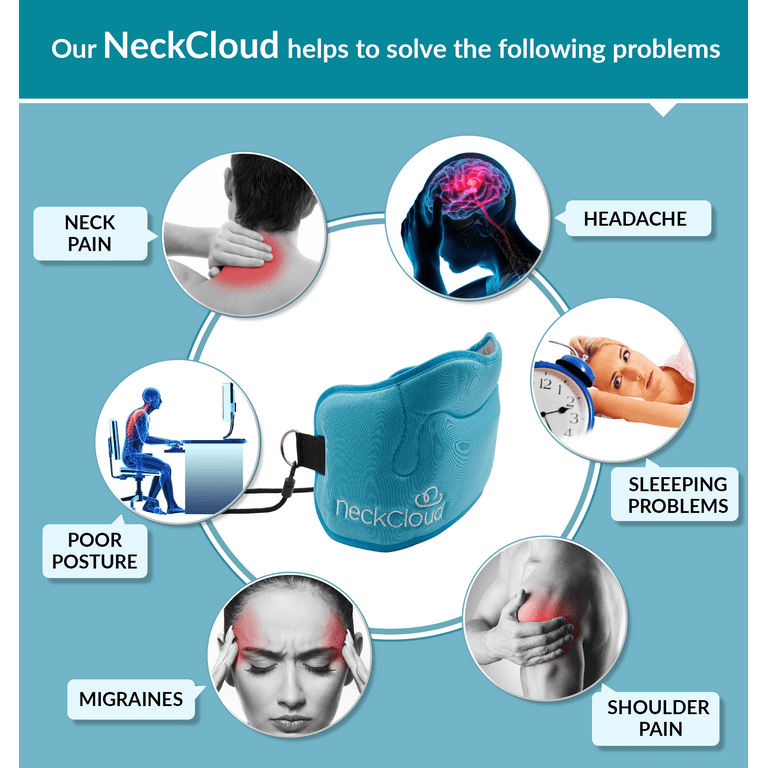Neck Cloud: Ingenious Assistance for Discomfort Alleviation and Better Posture
Neck Cloud: Ingenious Assistance for Discomfort Alleviation and Better Posture
Blog Article
Neck Pain in the Work Environment: Determining Threat Aspects and Applying Ergonomic Solutions
Neck pain in the work environment is a widespread problem that can influence employee health and efficiency. By recognizing the various threat variables adding to neck discomfort and applying ergonomic options, organizations can create a much more conducive workplace. Identifying these elements is essential in developing targeted methods to alleviate discomfort and prevent future injuries. Dealing with ergonomic concerns not only boosts worker wellness however also promotes total task complete satisfaction and efficiency.
Typical Causes of Neck Discomfort
Neck discomfort in the office is a widespread concern that can be attributed to several usual reasons. Furthermore, repetitive movements such as frequent bending, turning, or getting to can additionally contribute to neck discomfort over time.

Ergonomic Risk Factors
Poor ergonomics in the office can significantly add to neck discomfort amongst staff members. Elements such as incorrect desk elevation, poor chair support, and awkward positioning of computer system screens can all contribute in the growth of neck discomfort. When employees are forced to sit for extended durations in positions that stress their neck muscle mass, it can lead to rigidity, pain, and much more severe musculoskeletal issues in time.
In addition, inadequate ergonomic practices can result in employees embracing unpleasant poses while functioning, such as craning their necks to see a computer display or reaching uncomfortably for a mouse or keyboard. neck cloud. These repeated motions and unnatural positions can put excessive stress and anxiety on the neck and bordering muscle mass, leading to pain and lowered efficiency

Workdesk Arrangement Recommendations
To minimize the danger of neck pain and discomfort, there are numerous workdesk setup referrals that workers need to consider. Guarantee that the computer display is placed at eye degree to avoid stressing the neck by looking up or down.
It is also crucial to have appropriate lighting to lower eye strain, as squinting or leaning onward can bring about neck tension. Arrange the desk format to maintain regularly used things within arm's reach, restricting the need for repeated twisting or getting to motions. By executing these workdesk arrangement suggestions, staff members can produce a much Bonuses more ergonomic workspace that supports neck health and minimizes the risk of developing occupational neck discomfort.
Stretching and Exercise Tips
To preserve versatility and lower muscular tissue stress in the work environment, integrating extending and exercise regimens can be valuable for overall wellness and productivity. Basic desk-friendly stretches can help reduce neck discomfort and avoid tightness. Neck rolls, shoulder shrugs, and mild side-to-side neck stretches work in soothing tension. In addition, integrating exercises like chin tucks, shoulder blade squeezes, and upper back stretches can help reinforce muscle mass that sustain excellent pose.
Establishing suggestions or using apps that prompt motion can aid develop a regular extending routine. By focusing on these activities, you can enhance your physical wellness, lower the risk of neck pain, and enhance your overall productivity in the workplace.
Importance of Normal Breaks
In a fast-paced work environment where demands can add to physical stress like neck discomfort, developing a routine that emphasizes the significance of normal moved here breaks is vital. By incorporating brief breaks right into the job routine, employees can reduce the risk of developing neck discomfort and improve total convenience and efficiency.
These breaks can likewise offer as an opportunity for staff members to exercise relaxation techniques or mild neck stretches, additionally advertising bone and joint health. Implementing a culture that values and focuses on normal breaks can have a substantial influence on minimizing neck pain and improving total well-being in the office.
Final Thought
In final thought, dealing with ergonomic danger aspects and executing appropriate workstation arrangements are crucial in decreasing neck discomfort in the office. By promoting good pose, offering adequate assistance, and motivating routine breaks and stretches, companies can develop a much healthier and more productive workplace for staff members. Focusing on worker well-being via ergonomic options is crucial to avoid discomfort and improving overall office complete satisfaction.
Neck discomfort try these out in the workplace is a widespread issue that can influence worker well-being and performance. By recognizing and addressing these common causes of neck pain in the workplace, employers can take positive steps to create a more ergonomic and comfy work environment for their workers.
Poor functional designs in the work environment can dramatically add to neck pain amongst staff members. By executing these desk setup recommendations, staff members can produce a much more ergonomic office that supports neck wellness and reduces the risk of creating work-related neck pain.
Neck rolls, shoulder shrugs, and mild side-to-side neck stretches are effective in easing stress.
Report this page